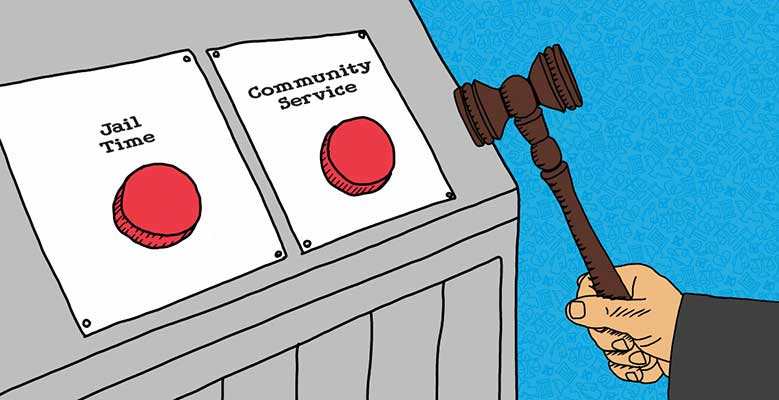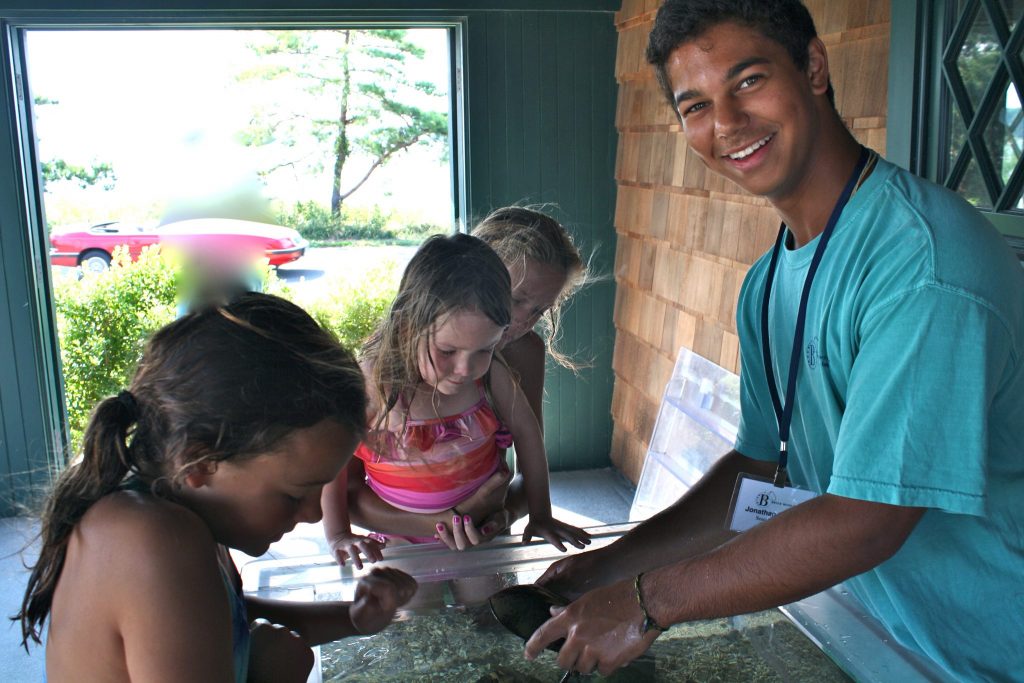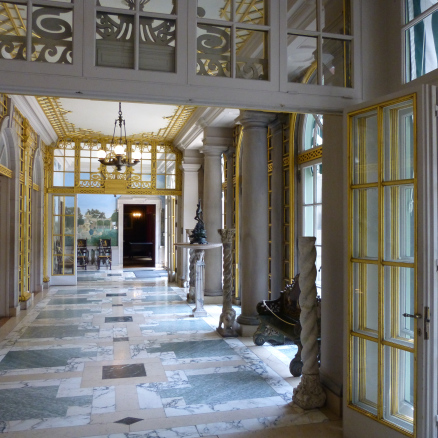“So, what did you do to end up working here for the summer?” asked Rich, a middle-aged cook who prepared lunch at the adult daycare center I was volunteering at.
I wanted to say I was there for altruistic reasons, but in reality, I was there because I missed the boat on getting a job that summer. My mom had a house rule: “If you didn’t work for money, you volunteered. If you didn’t volunteer, you did house chores. If you didn’t do anything that day, you didn’t eat that night.” I liked my mother’s cooking and didn’t want to sit on my ass all summer. So, I found out that the newly opened adult daycare center needed volunteers to assist the elderly. I figured, “why the hell not?” Let’s do it!
Rich gave me a smirk as he stirred the pot. “Well, you’re a first,” he said to me as I poured water into plastic cups.
His response caught me off guard. I stopped mid-pour to properly comprehend what he said. “How so?” I replied.
Rich took a breath and paused, seemingly rummaging his brain for the right words. Something told me I didn’t quite fit the profile of his usual “kitchen assistants.” He replied, “You might be the only one who actually wants to be here. Most of the boys your age who ‘volunteer’ have either been arrested for drugs or DUI and are here on some court-ordered community service.”

At the time, I shrugged it off. I liked Rich. He had a good sense of humor and I knew he didn’t have any ill intentions. However, the idea of “service” being seen as a punishment or done begrudgingly, or even done to pad your college application didn’t quite sit well with me. “What was Rich’s motivation to be there then?” I started asking myself. Maybe he was simply there because he wanted something to do and feel good about. I wanted to be different and was motivated to simply give it my all. It wasn’t until I started my own business that I was able to reflect on the positive experience of the valuable people skills I learned that summer. At the time, I was a shy, passive kid. I was able to hold a conversation but didn’t feel comfortable initiating conversations. Coming in, I was unsure if I would be able to engage with someone 50 to 70 years older than me, but I quickly learned that connecting with someone is, in fact, age agnostic. I learned the importance of taking the opportunity to learn about somebody’s life and what’s important to them. Anybody can stand around and smile, but it’s another thing to actually try to connect to the people.
A Vital Piece of My Week

During my summers between college semesters, I was a volunteer photographer at a local museum every Sunday. During the week, I took classes and worked part-time. The museum was an opportunity to use the visual storytelling skills I was learning in school, as well as an opportunity to play outside. The museum had a visitor’s center at the local beach to educate young children on the importance of taking care of the marine ecosystem. I photographed children gazing in awe at the live touch-tank of sea critters. As I engaged with the visitors, I noticed that many parents were compelled to bring their children to the touch tank because they were captivated by the photos of curious, engaged children on the museum’s social media accounts. I was thrilled and inspired to see that my effort played a part in driving attendance to what I found to be an important community program. It not only taught me firsthand how visual storytelling can mobilize people to action, but it also taught me the importance of reaching out for feedback to gauge the effectiveness of my work. In addition to the feeling of seeing how my work was having an impact, I had the benefit of being around a fun group of volunteers.

When I moved to Washington after college and worked in marketing, I was looking for that same volunteer experience that I had at the museum. Fate was good to me on one Sunday afternoon. I took a tour of a famed old home called the Anderson House. The house was beautiful and looked a bit like the Palace of Versailles on the inside. It had a rich history as it served as the headquarters to a prestigious heritage society. The docent guide who gave me my tour that day was a middle-aged gentleman named John. John was a lawyer during the week and volunteered at the house on the weekends. The house contained art from medieval Europe, Japan, and early America. The art displayed was so diverse that it would be hard to take a self-guided tour to understand its importance to the home and its former owner, but John was able to take all of the information around me and present it in an energetic and concise way. Spending just a short amount of time with John, it was abundantly evident that he had a passion for history and enjoyed his time as a volunteer. He was overflowing with positive energy and charisma that drew all of us into every word he spoke. As he pointed to objects in the room, he energetically engaged audience members to immerse them. It felt as though we were actually traveling back in time and the audience members were real “guests” in the house. By the time I finished the hour-long tour, I hurried over to John and asked, “where can I sign up to volunteer?”

As I shadowed several docents as a part of my training, I began noticing a common thread that runs through every incredible tour I went on. All of the best docents were able to enthrall their audience from start to finish by infusing the tour with their own unique style and interests: Larry, an architect, made it a point to emphasize the construction and materials used to build the house. Ariel, a lawyer and feminist, who emphasized the role of Mrs. Anderson in both the construction of the house and her influence on her husband’s career. Marcelle, a septuagenarian French woman, who had over 20 years of experience as a volunteer focused on the French historical influences on the house. The docents who failed to add their own flavor to the tours and really make it their own were faced with disengaged crowds who were eager to get the tour over with. I was motivated to be the former and captivate my audience on every tour I led.
Since I worked in software and was interested in new technology, I chose to focus on how the house was on the cutting edge for home consumer technology in the early 1900’s. The house was one of the first homes in DC to have electricity, elevators, dumbwaiters, and a garage for a collection of cars. Constant repetition of the story and making my own modifications based on audience interests and questions allowed me to see if I was capturing interest. For example, on one tour, I found that my tour was full of “Downton Abbey” fans. Therefore, as we approached the dining room, I asked them “Where do you think the host and hostess sat at this table? Middle or at head and foot?” Most of the audience members would say middle because they saw how the wealthy and powerful exhibited etiquette on TV.” By highlighting how the dealings of the house compared to what they might expect to see on “Downton Abbey,” I was able to make the tour more relatable and enjoyable. My passion for storytelling and my flare for history was contagious enough that it ended up inspiring two people to sign up as docents. Surprisingly, I was even able to help a bride-to-be settle on the House as the proper venue for her wedding and reception site.
So how did volunteering prepare me to be an entrepreneur?
I recently learned about a concept called the “portfolio career” which entails leveraging the financial security that comes with working full time to fund my excursions in my free time into different areas of interests via volunteering or working for free. In fact, prior to even learning this term, volunteering outside of my day job prepared me for the rigors of telling a story “that moved others to action” as a software sales rep and independent consultant.
All organizations have a story and “mission” as to why they exist. I was interested in the idea of working for companies whose technology would “change the world.” Whether it was cloud computing replacing the need to manage a complex IT infrastructure, cybersecurity solutions to help measure the effectiveness of IT security budgets, and AI solutions that could save companies millions in overhead costs in call center organizations, I wanted to be the one to spread the gospel. Such organizations talked a big game about being “customer-obsessed” and “accelerating ambitions,” but when push came to shove, those ideals fell victim to reality. Time is always money. That’s just a fact of life. In every job I’ve worked on, everybody was on a deadline, work wasn’t that fun, and I had no idea whether or not I would have a job in the next several months. I saw every sales rep or marketer, including myself, throw them out and put our nose to the grindstone. The analysis of why leads weren’t converting to sales conversations and counting how many meetings I had set for the month ultimately spelled “B-L-A-M-E-T-H-E-M” or “B-Y-E-B-Y-E.” Quantifying achievement and being solely-focused on making quarterly revenues to survive trumped any rosey narrative that could be painted, ultimately clobbering any sense of inspiration or narrative out of me.
Now, don’t get me wrong, I’m not saying that non-profit entities don’t have money troubles also. Who doesn’t these days? I wasn’t privy to the financials and internal politics of the organizations. It was my job as a volunteer to focus on teaching, projecting, and entertaining others as to why the organization exists to serve the community-at-large. This allowed me to take money out of the equation and focus on aligning myself with the mission. Ultimately, the reward of gratification came later. In consulting, I’ve learned that sometimes not all the work that I come across is financially rewarding or exactly what I am interested in, but I see it as a stepping stone to something better. Being a volunteer taught me that not every “job” will fill your bank account, but instead will pay you with news skills and teach you to get behind the idea rather than awaiting the big payday. In fact, I believe the passion required of a volunteer can coexist with the ruthless pragmatism of a businessman. I’ve seen it in my consulting work. It is the build-up of all of my experience across different organizations, skills learned, lessons good and bad learned, and different outcomes achieved – whether the name of the game was profitability or raising awareness of something important.
As a consultant, I’ve regained my sense of mission which is to help other entrepreneurs tell their story and use what I believe will differentiate them from others. Ultimately, my approach is two-pronged. I need to be able to answer the following questions about somebody: “Why does this organization exist?”, “Who are they helping?”, and “Why is their specific solution the ‘right one’ to accomplish the mission?” The answers to these questions help me work with that organization to create a better story for themselves as opposed to unremarkable sales pitches. If I hadn’t volunteered and was solely focused on getting paid a fabulous salary, I would’ve missed the opportunity to focus on who and what I cared about and build a business on that passion rather than falsely thinking I have the next best thing.
Key questions to ask yourself
- What mission inspires you?
- What can you gain from volunteering? Are you trying to bring existing skills to that mission? Or are you trying to gain new skills to make a career change?
I’d love to hear about the missions that drive you and what your volunteering experiences have taught you.
